NCERT Solutions for Class 8 Maths Chapter 11 Mensuration
- Class 8 Maths Mensuration Exercise 11.1
- Class 8 Maths Mensuration Exercise 11.2
- Class 8 Maths Mensuration Exercise 11.3
- Class 8 Maths Mensuration Exercise 11.4
- Mensuration Class 8 Extra Questions
NCERT Solutions for Class 8 Maths Chapter 11 Mensuration Exercise 11.1
Ex 11.1 Class 8 Maths Question 1.
A square and a rectangular field with measurements as given in the figure have the same perimeter. Which field has a larger area?
Solution:
Perimeter of figure (a) = 4 × side = 4 × 60 = 240 m
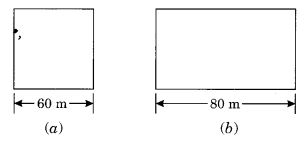
Perimeter of figure (b) = 2 [l + b]
Perimeter of figure (b) = Perimeter of figure (a)
2[l + b] = 240
⇒ 2 [80 + b] = 240
⇒ 80 + b = 120
⇒ b = 120 – 80 = 40 m
Area of figure (a) = (side)
2
= 60 × 60 = 3600 m
2
Area of figure (b) = l × b = 80 × 40 = 3200 m
2
So, area of figure (a) is longer than the area of figure (b).
Ex 11.1 Class 8 Maths Question 2.
Mrs Kaushik has a square plot with the measurement as shown in the figure. She wants to construct a house in the middle of the plot. A garden is developed around the house. Find the total cost of developing a garden around the house at the rate of ₹ 55 per m
2
.
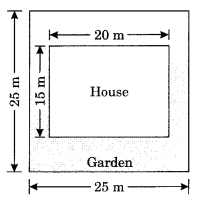
Solution:
Area of the plot = side × side = 25 m × 25 m = 625 m
2
Area of the house = l × b = 20 m × 15 m = 300 m
2
Area of the garden to be developed = Area of the plot – Area of the house = 625 m
2
– 300 m
2
= 325 m
2
Cost of developing the garden = ₹ 325 × 55 = ₹ 17875
Ex 11.1 Class 8 Maths Question 3.
The shape of a garden is rectangular in the middle and semicircular at the ends as shown in the diagram. Find the area and the perimeter of this garden. [Length of rectangle is 20 – (3.5 + 3.5) metres]
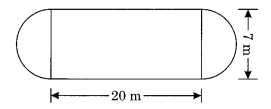
Solution:
Length of the rectangle = 20 – (3.5 + 3.5) = 20 – 7 = 13 m
Area of the rectangle = l × b = 13 × 7 = 91 m2
Area of two circular ends = 2(
= πr
2
=
=
= 38.5 m
2
Total area = Area of the rectangle + Area of two ends = 91 m
2
+ 38.5 m
2
= 129.5 m
2
Total perimeter = Perimeter of the rectangle + Perimeter of two ends
= 2 (l + b) + 2 × (πr) – 2(2r)
= 2 (13 + 7) + 2(
= 2 × 20 + 22 – 14
= 40 + 22 – 14
= 48 m
Ex 11.1 Class 8 Maths Question 4.
A flooring tile has the shape of a parallelogram whose base is 24 cm and the corresponding height is 10 cm. How many such tiles are required to cover a floor of area 1080 m
2
? (If required you can split the tiles in whatever way you want to fill up the corners).
Solution:
Area of the floor = 1080 m
2
= 1080 × 10000 cm
2
= 10800000 cm
2
[∵ 1 m
2
= 10000 cm
2
]
Area of 1 tile = 1 × base × height = 1 × 24 × 10 = 240 cm
2
Number of tiles required
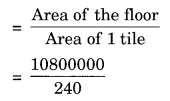
= 45000 tiles
Ex 11.1 Class 8 Maths Question 5.
An ant is moving around a few food pieces of different shapes scattered on the floor. For which food-piece would the ant have to take a longer round? Remember, the circumference of a circle can be obtained by using the expression C = 2πr, where r is the radius of the circle.
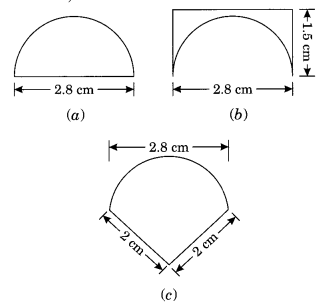
Solution:
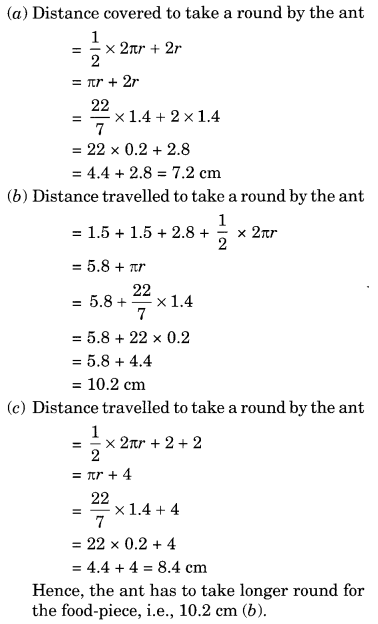
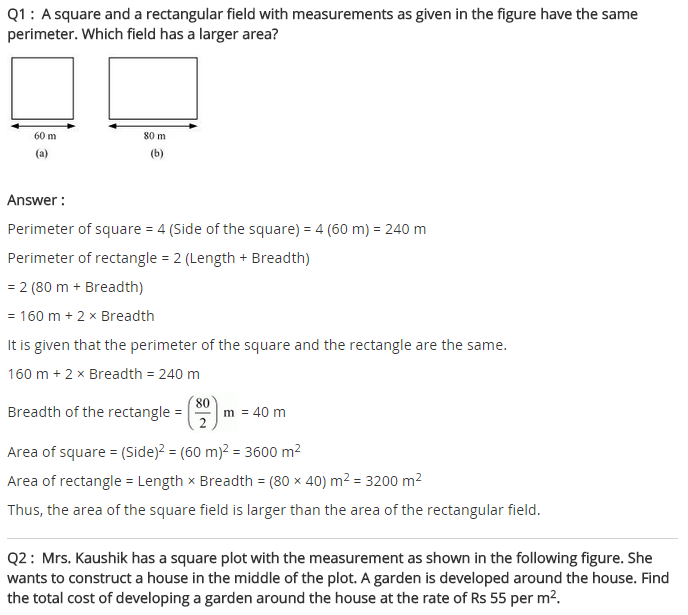
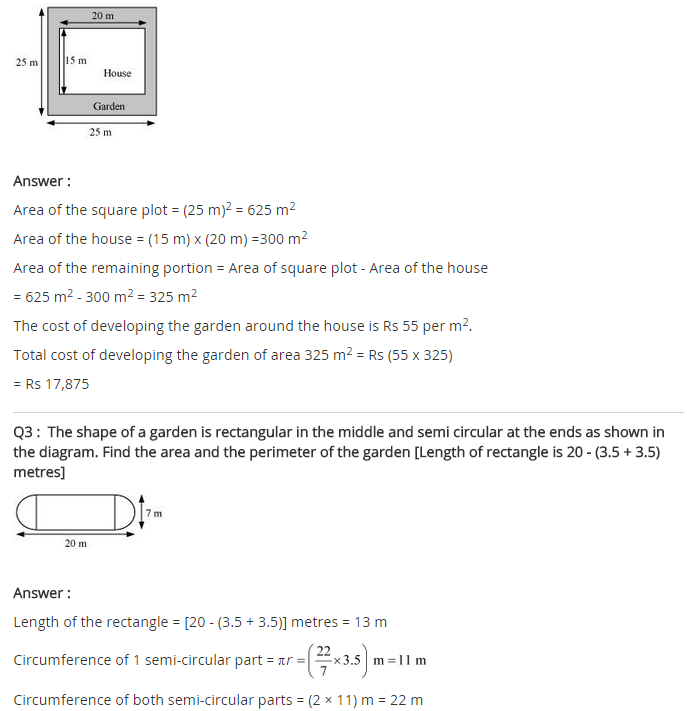
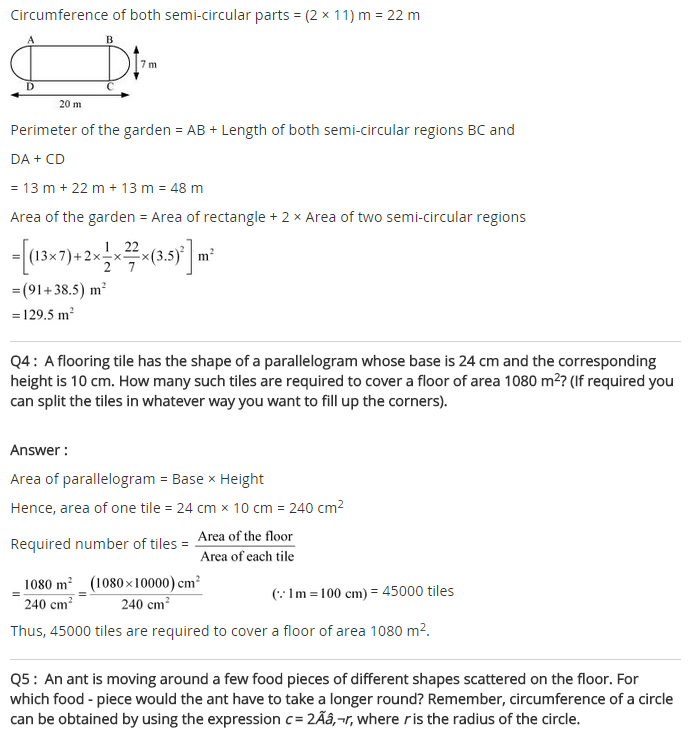
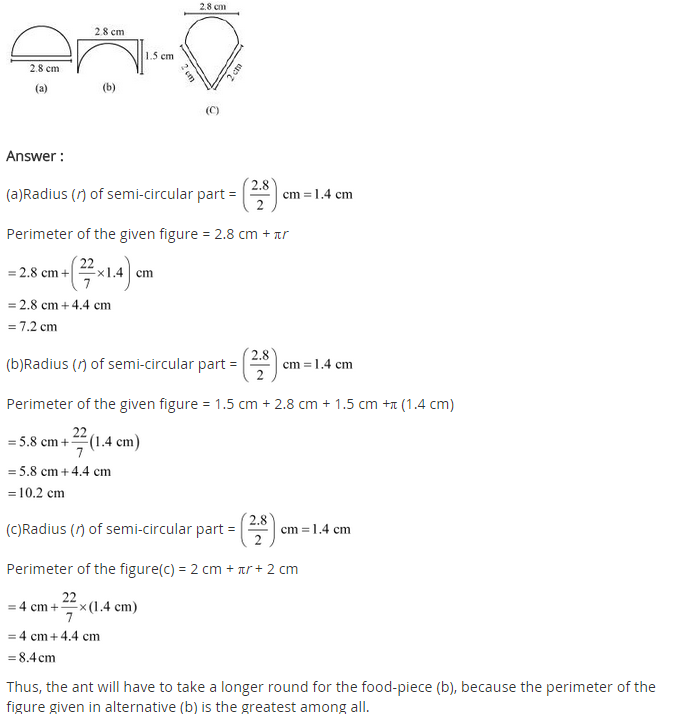
More CBSE Class 8 Study Material
- NCERT Solutions for Class 8 Maths
- NCERT Solutions for Class 8 Science
- NCERT Solutions for Class 8 Social Science
- NCERT Solutions for Class 8 English
- NCERT Solutions for Class 8 English Honeydew
- NCERT Solutions for Class 8 English It So Happened
- NCERT Solutions for Class 8 Hindi
- NCERT Solutions for Class 8 Sanskrit
- NCERT Solutions